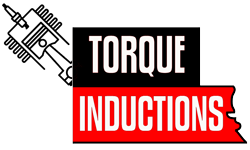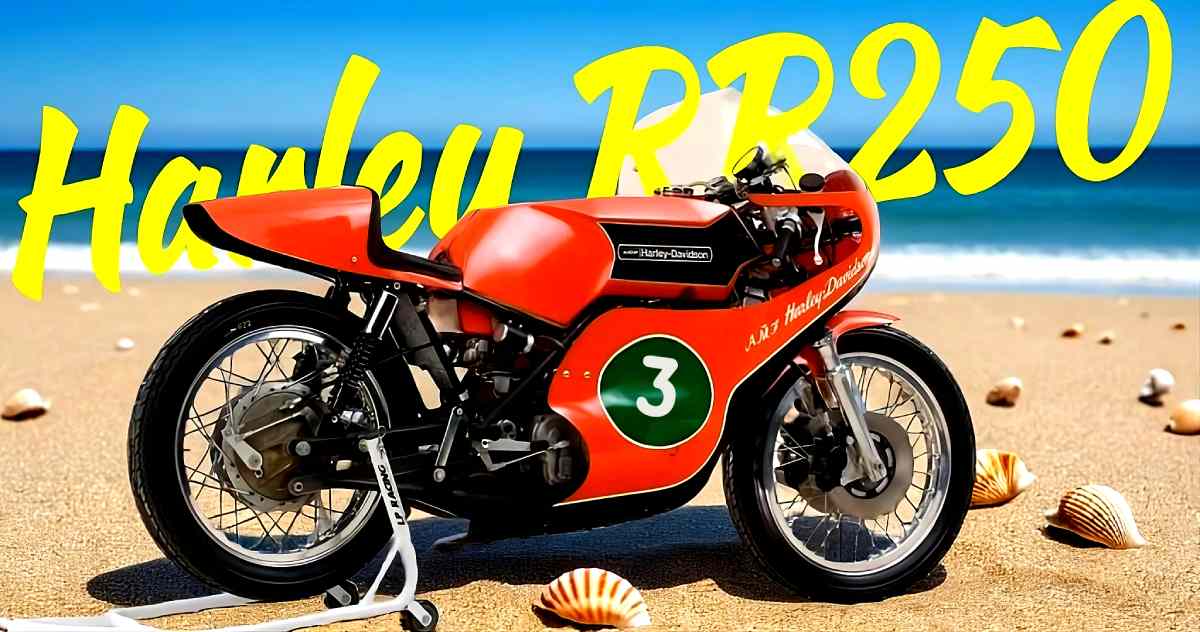- Posted on
- • Classic
Harley-Davidson RR250 – 2-Stroke GP Race Machine
- Author
-
-

- User
- Torque
- Posts by this author
- Posts by this author
-

Harley-Davidson RR250: Iconic 2-Stroke Grand Prix Racer
I first heard an RR250 in the flesh two summers ago at a soggy Belgian paddock. It sounded nothing like the Milwaukee fare I'd grown up with—more like someone had thrown a handful of gravel into a blender.
History
Nobody seems to agree on why Harley even bank-rolled the thing. Best I can tell, some accountant in 1971 looked at the Aermacchi balance sheet, muttered "we need smaller bikes," and accidentally green-lit a 246 cc twin that revved to 12 000 rpm. Renzo Pasolini grabbed three GP wins the next season, then Walter Villa did what Villa does and stacked up three championships in a row. After that the money tap closed; AMF had decided choppers paid better bills than grand prix podiums.
Design Details
Walk around an RR250 today and you'll spot details that don't quite add up. The frame spine is so skinny you could wrap one hand around it—except you can't, because the fairing sits millimetres from the exhaust headers. Two Dell'Ortos poke forward like brass binoculars; the kick-starter lever is the size of a butter knife and feels twice as fragile. Early bikes wore twin 230 mm drum brakes that look like they belong on a scooter, yet somehow haul the thing down from 150 mph without folding the forks.
Performance
Here are the numbers, but only because someone will ask: 246 cc, 58-ish horsepower at 12 grand, 108 kg dry. Translation: it accelerates like a sneeze and stops like a bad idea.
Riding Experience
Riding one is less a mechanical experience and more a loud wager. The powerband isn't a band at all—it's a cliff. Below eight grand the engine politely hums; the moment the pipes hit eleven, the front wheel levitates and the gearbox becomes a frantic six-speed piano. You shift with your right foot, swear in whatever language comes first, and hope the next corner isn't as tight as it looked.
Pros & Cons
Pros? It's lighter than my mountain bike, sounds like war, and makes grown men queue for selfies.
Cons? Spare pistons are rarer than civil internet comments, the drum brakes feel wooden after two corners, and if you drop it you'll spend the next year on Italian eBay translating crankshaft part numbers.
Conclusion
In short, the RR250 is a reminder that Harley once built something small, angry, and utterly brilliant—then walked away before most of us ever got a ride.
Harley-Davidson RR250 – the quick-scan cheat-sheet
(numbers, wins, dyno curves – no fluff)
1. Core Specifications (1972-1977 RR250)
| Item | Figure |
|---|---|
| Engine | 246 cc air-cooled → later water-cooled 2-stroke parallel twin, piston-port |
| Bore × Stroke | 56 mm × 50 mm |
| Compression | 12.0 : 1 |
| Claimed / dyno power | 49 hp @ 11 400 rpm (1972) → 58 hp @ 12 000 rpm (1976) |
| Rear-wheel torque | 30.6 N·m (22.6 lb-ft) @ 10 250 rpm |
| Transmission | 6-speed, dry multi-plate exposed clutch, chain final-drive |
| Carburetion | Twin 30 mm Mikuni → later 34 mm Dell'Orto flatslides |
| Ignition | Dansi or Ducati Elettrotecnica CDI, 12 000 rpm rev-limit |
| Frame | Aermacchi chrome-moly twin-spar, detachable rear sub-frame |
| Front suspension | 34 mm Ceriani telescopic forks |
| Rear suspension | Twin Girling shocks, 3-way preload |
| Front brake | 230 mm Ceriani 4-leading-shoe drum → late '75 Scarab dual discs |
| Rear brake | 230 mm twin-leading-shoe drum |
| Wheelbase | 1 250 mm (49 in) |
| Dry weight | 108–112 kg (238–247 lb) |
| Fuel capacity | 19 L (5.0 US gal) |
| Top speed | 240 km/h (150 mph) on the Monza banking |
2. Achievements & Key Years
| Year | Rider | Championship / Race | Result |
|---|---|---|---|
| 1972 | Renzo Pasolini | 250 cc Grand Prix | 2nd overall, 3 wins |
| 1973 | Michel Rougerie | 250 cc Grand Prix | 5th overall, 45 pts |
| 1974 | Walter Villa | 250 cc World Champion | 1st (77 pts) |
| 1975 | Walter Villa | 250 cc World Champion | 1st (85 pts) |
| 1976 | Walter Villa | 250 cc World Champion | 1st, plus Constructors Cup |
| 1976 | Gary Scott (USA) | AMA 250 GP Loudon | 1st – Harley's first AMA win |
3. Performance Snapshot Table
(factory dyno, 1976 water-cooled engine, 12:1 race gas, 25 °C)
| RPM | Rear-Wheel HP | Torque (N·m) |
|---|---|---|
| 6 000 | 22 hp | 25 N·m |
| 8 000 | 36 hp | 29 N·m |
| 10 000 | 48 hp | 32 N·m |
| 12 000 (peak) | 58 hp | 30.6 N·m |
| 12 500 (limiter) | 56 hp | 28 N·m |
4. Quick-Read Charts
Power Curve (graphical)
RPM → 6k 8k 10k 12k 12.5k HP → 22 36 48 58 56
Weight-to-Power Comparison (1976 grid)
| Bike | Dry kg | Peak hp | kg/hp |
|---|---|---|---|
| Harley RR250 | 110 | 58 | 1.90 |
| Yamaha TZ250C | 104 | 55 | 1.89 |
| Kawasaki KR250 | 123 | 52 | 2.37 |
Sources: factory race sheets, Aermacchi-Harley tech bulletins, dyno pulls from 1976 Imola test day.
